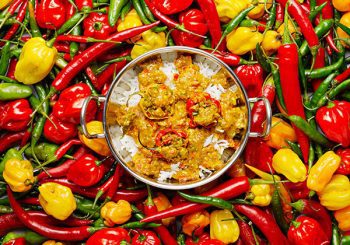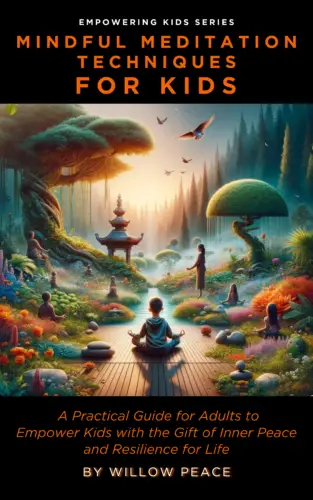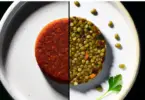 By Sayer Ji
By Sayer Ji
Contributing writer for Wake Up World
Did you know that a single culinary serving of spices in the form of curry can dilate your arteries, preventing the cardiovascular harms associated with eating common foods?
While spices are thought of mainly as culinary agents for the aesthetical enhancement of the flavor of food, they are also powerful medicinal agents, and in certain respects may actually mitigate the harms of things we like to eat that may not be as good for us as their pleasurable tastes and textures would have us believe.
A study published in Nutrition Journal titled, “A single consumption of curry improved postprandial endothelial function in healthy male subjects: a randomized, controlled crossover trial,” brought home exactly this point. Moreover, it reveals that certain culinary formulas, sometimes handed down through countless generations, may have indispensable value for our health. Interestingly, we find this concept echoed in the word recipe itself, whose first recorded use in Mid 16-century French literally means “medical prescription.”
A curry is essentially a blend of various spices used as a sauce in dishes, and in the case of this study’s tested formula, a traditional Japanese combination was used containing the following 8 herbs: Clove, coriander, cumin, garlic, ginger, onion, red pepper, turmeric. [Note: click the hyperlinks of the preceding 8 herbs to view the extensive database of healing properties we have amassed on each one] Interesting, Japanese curry was actually introduced to Japan by the British during the Meiji period (1868–1912) when India was still under colonial rule, making it a “Western” influence there, even though it ultimately originated in the Indian subcontinent and Southeast Asia.
In the study, researchers tested 14 healthy male subjects with an average age of 45 years, who were given either a single serving of curry meal or spice-free control meal (180 g of curry or control and 200 g of cooked rice; approximately 500 kcal in total). Researchers then tested what happened to the blood vessels of subjects before and consuming either meal.
Based on post-meal measurements of the ability of blood to pass through the blood vessels (postprandial flow-mediated vasodilation (FMD)) and other parameters, clearly the consumption of curry increased the blood flow through the blood vessels (increased FMD), whereas the consumption of the curry-free control meal resulted in a decrease in blood flow (decreased FMD). More specifically, the results were reported as follows:
“The consumption of the control meal decreased FMD from 5.8?±?2.4% to 5.1?±?2.3% (P?=?0.039). On the other hand, the consumption of the curry meal increased FMD from 5.2?±?2.5% to 6.6?±?2.0% (P?=?0.001), and the postprandial FMD after the curry meal was higher than that after the control meal (P?=?0.002). Presence of spices in the curry did not alter significantly the systemic and forearm hemodynamics, or any biochemical parameters including oxidative stress markers measured.”
The researchers concluded that curry prevented the negative effects of the meal upon post-meal “endothelial function,” that is, it prevented the inner lining (endothelium) of the blood vessels from contracting and inhibiting the normal flow of blood throughout the cardiovascular system. They surmised that the antioxidant activity of the spices likely are responsible for the observed positive outcomes, possibly through blunting the post-meal increases in blood sugar and/or oxidative stress. They summarized their findings:
Curry consumption ameliorates postprandial endothelial dysfunction and may be beneficial for preventing cardiovascular events. Lifestyle-related diseases such as atherosclerosis and diabetes mellitus have become serious health problems in the modern world. Curry may be helpful in the fight against those lifestyle-related diseases.”
The reason why this finding is highly relevant to concerns about cardiovascular function is because atherosclerosis — the so-called “hardening of the arteries” — takes decades to develop within the system, often completely without symptoms, and one of the characteristic predisposing features of this pathological process is endothelial dysfunction, often starting with the inability of the blood vessels to fully relax when confronted with any number of stressors – dietary incompatibilities (e.g. wheat) and deficiencies (e.g. magnesium), environmental (e.g. smoking), infectious (e.g. periodontal pathogens), and psychological (e.g. stress) — and resultant damage incurred by them. You can see a more extensive list of nutritional approaches to keeping your arteries healthy here.
Imagine what would happen if we could address endothelial dysfunction decades before it progresses into atherosclerosis? Since heart disease is the #1 killer worldwide, adding certain medicinal spices to the diet could perhaps help to neutralize the cardiotoxic and highly lethal disease vector which is the standard Western diet. We’ve reported, previously, on how something so simple as adding fresh avocado to a traditional American hamburger completely ameliorates the artery-contracting properties of this typical meal. It is amazing when you consider all of the edible things now studied which are capable of ameliorating endothelial dysfunction. You can peruse the Endothelial Dysfunction page on GreenMedInfo.com’s healing substances database and find over 90 substances that may help with this goal.
Consider, also, that some of the spices in curry, such as turmeric, and which features almost universally in all the different cultural variations, have themselves been studied individually to have powerful cardiovascular benefits. Turmeric extract, for instance, was found to confer health benefits to the cardiovascular system as powerful as exercise. Garlic has been found to clear the arteries of plaque and to have blood-pressure lowering properties in hypertensive patients about as potent as pharmaceutical drugs. You can learn more by looking at the over 1,000 studies we have indexed on the therapeutic potential of dozens of culinary herbs and spices here.
The beauty, however, is that culinary combinations of herbs often require lower doses than are typically used in the context of traditional herbal medicine. In fact, recent research on the spice rosemary known by poets and herbalists for centuries to be “for remembrance,” shows that lower culinary doses are much more effective than larger ‘pharmacologic’ doses for boosting cognition. Less can be more, and with the possibility of synergistic combinations, even lower amounts are needed to obtain a beneficial effect, especially when the purpose is to prevent disease, rather than just treat it after the fact with an aggressive ’emergency care’ model typical of allopathic approaches. Also, for those who do not like “spicy food,” consider drinking spices like turmeric by preparing beverage called “Turmeric Milk.” Check out this DIY recipe here.
Also, consider that the quality of the spices you consume may make all the difference to your health. It is a underreported fact that many of the spices available on the shelf in the U.S. today are irradiated with massive doses of gamma radiation, in a process euphemistically called “cold-pasteurization.” Read my article on the topic, “The Invisible Nuclear Threat Within Non-Organic Food,” to learn more. Suffice it to say, unless it is certified organic, or wild-harvested, it may actually be harmful to your health.
Finally, another useful culinary hack you can employ to reduce white rice’s potential toxicity is to cook it with coconut. It will significantly reduce both the caloric content and blood-sugar elevating properties of the dish if you do so. Learn more by reading: Coconut Oil May Reduce White Rice Calories 50-60%.
Recommended articles by Sayer Ji:
- Turmeric’s Weight Loss Secret: It Turns Bad Fat Good
- Brain Regeneration: Why It’s Real and How To Do It
- Research: Garlic is an Effective Natural Treatment for Heart Disease
- Wi-Fi Devices Increase Mercury Release From Dental Amalgams
- Mammography Is Harmful and Should Be Abandoned, Scientific Review Concludes
- “Killer Germs” Obliterated by Medicinal Smoke Smudging, Study Reveals
- Turmeric’s ‘Smart Kill’ Properties Put Chemo & Radiation To Shame
- Beet Juice Boosts Cognitive Function In One Dose
- The Amazing Healing Properties of Apples
- 6 Bodily Tissues That Can Be Regenerated Through Nutrition
- How to Clean Your Arteries With One Simple Fruit
About the author:
Sayer Ji is the founder of Greenmedinfo.com, a reviewer at the International Journal of Human Nutrition and Functional Medicine, Co-founder and CEO of Systome Biomed, Vice Chairman of the Board of the National Health Federation, and Steering Committee Member of the Global Non-GMO Foundation.
For more, visit GreenMedInfo.com and Facebook.com/GreenMedInfo, or sign up for GreenMedInfo’s free e-Newsletter.
© January 31st, 2019 GreenMedInfo LLC. This work is reproduced and distributed with the permission of GreenMedInfo LLC. Want to learn more from GreenMedInfo? Sign up for their newsletter here.
Have you ever wanted to achieve something deeply meaningful but struggled to channel your potential? This free online session explores how subtle energy can help you align your inner power with your goals, paving the way for transformation.
Join one of the leading educators in metaphysics as they guide you through unique practices to cultivate purpose, access creative insights, and create a magnetic energy field that supports your success. Discover how to break through limitations and envision the ripple effects of your work influencing your community.
Don’t miss this opportunity to align your energy and create your most powerful year yet. Learn the tools and practices you need to bring your vision to life. RSVP for free today and start your journey!
 If you’ve found value in our articles, we’d greatly appreciate your support by purchasing Mindful Meditation Techniques for Kids—A Practical Guide for Adults to Empower Kids with the Gift of Inner Peace and Resilience for Life.
If you’ve found value in our articles, we’d greatly appreciate your support by purchasing Mindful Meditation Techniques for Kids—A Practical Guide for Adults to Empower Kids with the Gift of Inner Peace and Resilience for Life.
In the spirit of mindfulness, we encourage you to choose the paperback version. Delve into its pages away from screen glare and notifications, allowing yourself to fully immerse in the transformative practices within. The physical book enriches the learning process and serves as a tangible commitment to mindfulness, easily shared among family and friends.
Over the past few years, Wake Up World has faced significant online censorship, impacting our financial ability to stay online. Instead of soliciting donations, we’re exploring win-win solutions with our readers to remain financially viable. Moving into book publishing, we hope to secure ongoing funds to continue our mission. With over 8,500 articles published in the past 13 years, we are committed to keeping our content free and accessible to everyone without resorting to a paywall.








